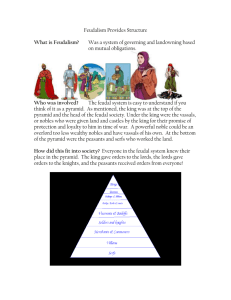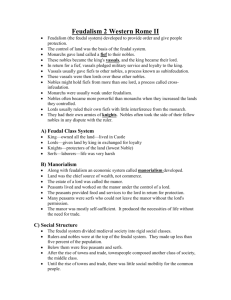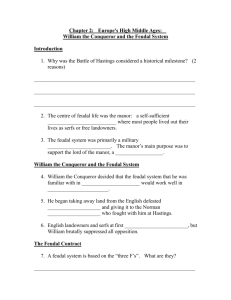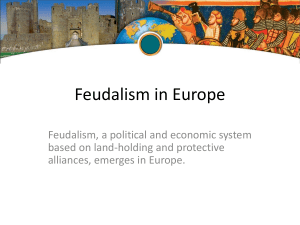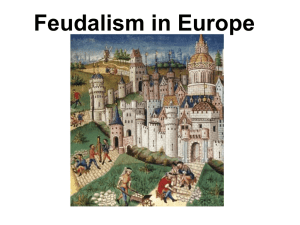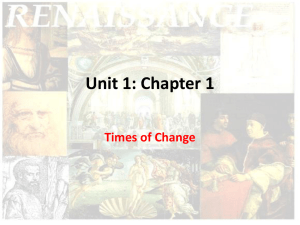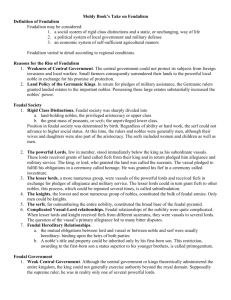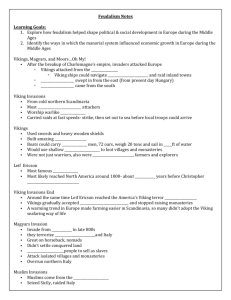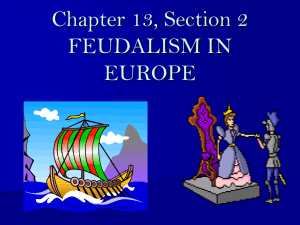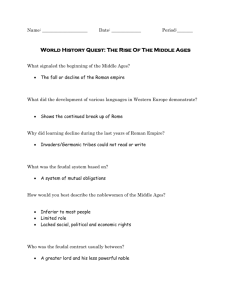Chapter 2: Europe`s High Middle Ages I. William the Conqueror and
advertisement
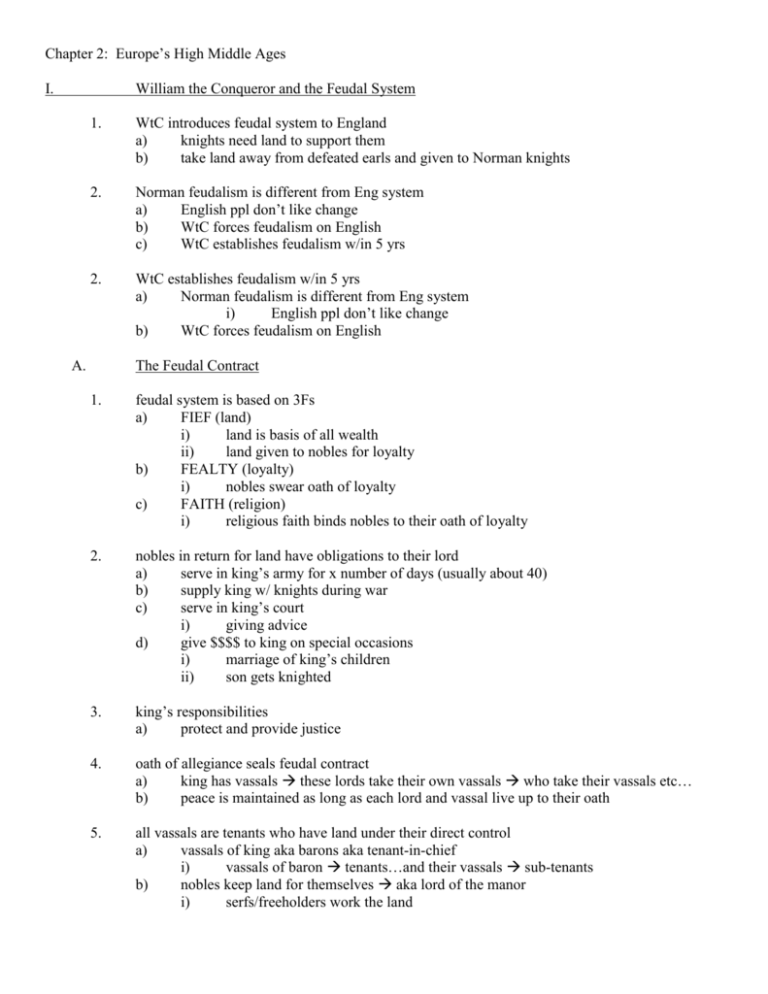
Chapter 2: Europe’s High Middle Ages I. William the Conqueror and the Feudal System 1. WtC introduces feudal system to England a) knights need land to support them b) take land away from defeated earls and given to Norman knights 2. Norman feudalism is different from Eng system a) English ppl don’t like change b) WtC forces feudalism on English c) WtC establishes feudalism w/in 5 yrs 2. WtC establishes feudalism w/in 5 yrs a) Norman feudalism is different from Eng system i) English ppl don’t like change b) WtC forces feudalism on English A. The Feudal Contract 1. feudal system is based on 3Fs a) FIEF (land) i) land is basis of all wealth ii) land given to nobles for loyalty b) FEALTY (loyalty) i) nobles swear oath of loyalty c) FAITH (religion) i) religious faith binds nobles to their oath of loyalty 2. nobles in return for land have obligations to their lord a) serve in king’s army for x number of days (usually about 40) b) supply king w/ knights during war c) serve in king’s court i) giving advice d) give $$$$ to king on special occasions i) marriage of king’s children ii) son gets knighted 3. king’s responsibilities a) protect and provide justice 4. oath of allegiance seals feudal contract a) king has vassals these lords take their own vassals who take their vassals etc… b) peace is maintained as long as each lord and vassal live up to their oath 5. all vassals are tenants who have land under their direct control a) vassals of king aka barons aka tenant-in-chief i) vassals of baron tenants…and their vassals sub-tenants b) nobles keep land for themselves aka lord of the manor i) serfs/freeholders work the land 6. serfs & freeholders make up 90% of population a) have no power b) freeholders own their land i) have to pay yrly fee to lord of the manor c) serfs are property = part of land i) land cannot be taken away from them Chapter 2: Europe’s High Middle Ages II. Medieval Life and Custom A. The Manor 1. manor is self-sufficient a) each manor has farmlands, woodland, common pasture and at least one village a) made up of: b) c) d) farmland woodland common pasture village provides enough food for everyone manor village: church mill blacksmith tannery have skilled ppl to do most jobs: thatching a roof fletching an arrow 2. manor villages usually located near water source a) water provides: drinking water power (mills) b) access to hay fields feed for livestock c) forest firewood and for hunting 3. demesne is land under direct control of lord a) made up of: gardens orchards strips of land (farms) b) rest of manor fields used by/belong to serfs/freeholders c) bailiffs are hired to manage the estate B. Ordinary People 1. serfs/freeholder provide labour on estate, have lowest standard of living a) serfs are part of property can’t leave land b) serfs’ duties: work 2-3 days/week for lord: ploughing planting weeding harvesting c) strips of land given to serfs to farm…everyone has access to river d) strips of land was passed on generation to generatn e) % of produce given to lord of manor…the rest is for family consumption and to sell 2. serfs diet was supplemented with small vegetable/herb garden a) owned livestock: cows sheep horse pigs chickens ducks b) average males consumes 5000 calories/day (bread and beer) c) also ate: herring onions leeks cheese fruit peas eggs milk d) manure was used as fertilizer
